Qatar’s first A350 and fourth A380

On 24 December Qatar Airways reported that the world’s first Airbus A350 XWB (Xtra Wide Body) and the airline’s fourth A380 had arrived in Doha simultaneously.
The A350 aircraft, for which Qatar Airways is the global launch customer, is set to commence service on the Doha-Frankfurt route starting in January 2015.
The world’s first A350 XWB aircraft to be delivered flew to Doha from France, following a handover ceremony and press conference which were attended by Qatar Airways Group Chief Executive, HE Akbar Al Baker, senior Airbus and Rolls-Royce officials, and more than 150 international media in Toulouse.
New Zealand Marine Inquiry 11-204, the Rena grounding
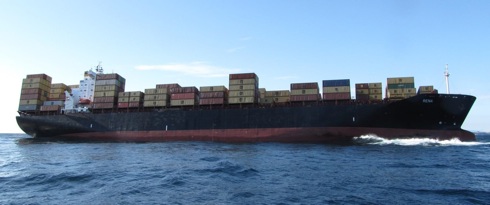
The Liberian-registered container ship Rena left the New Zealand port of Napier at 1020 on 4 October 2011 bound for Tauranga. The master had given an estimated time of arrival at the Tauranga pilot station of 0300 the following day. The master calculated the estimated time of arrival by dividing the distance to steam by Rena’s normal service speed. The calculation did not account for the unfavourable currents that normally prevail down that stretch of coastline…
The full report here.
Transas upgrades simulator complex at the Batumi State Maritime Academy
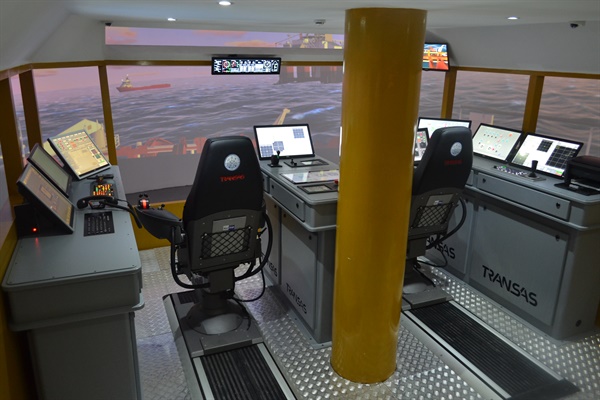
The President of Georgia Giorgi Margvelashvili and President of Latvia Andris Berzins visited Batumi State Maritime Academy (BSMA) to open the renovated state-of-the-art simulation centre on 27 November. The Full Mission Offshore simulator, which has become the extension of the existing simulation complex, has been developed and installed by Transas Marine. Now, the BSMA boasts one of the most advanced simulator complexes in the Black Sea region, it is claimed.
70 Years of the CANSO
Chicago Convention

In Chicago on 8 December CANSO, the Civil Air Navigation Services Organisation, was presented with a major award for its contribution to the aviation industry. During events to celebrate the 70th anniversary of the Chicago Convention CANSO also signed an agreement on cyber security which will ensure a common and united approach to tackle this significant and evolving threat.
Wright Brothers and US Coast Guard
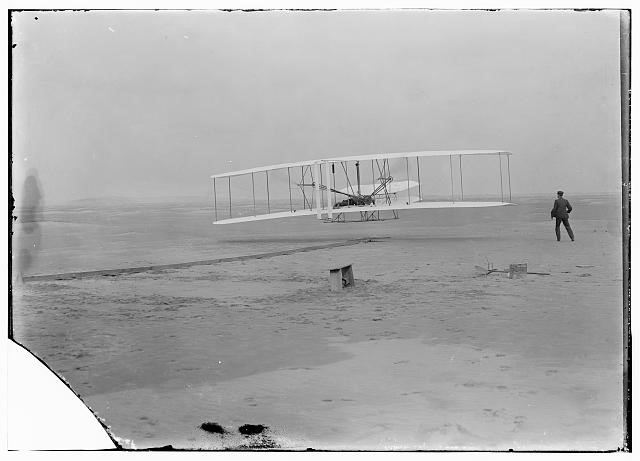
Coast Guard aviators have patrolled the nation’s skies for nearly 100 years, but it wasn’t the pilots who first helped get the airplane off the ground.
On a stretch of empty sand in the Outer Banks of North Carolina 111 years ago, a group of surfmen from Life-Saving Station Kill Devil Hills guarded the shore near the town of Kitty Hawk. The surfmen lived hidden away between the Atlantic Ocean and Albemarle Sound, within the sparsely populated lands of the Outer Banks….
IALA appoints new Secretary General

It was reported by IALA from St Germain-en-Laye, France, on 15 December that Francis Zachariae of Denmark is to be the Secretary General of IALA with effect from 1 February next.
Independent inquiry into UK ATC failure
It was reported on 15th December that the UK Civil Aviation Authority (CAA) and the National Air Traffic Service (NATS) have agreed the establishment of an independent inquiry following the disruption caused by the failure in air traffic management systems on the afternoon of Friday 12 December 2014.
The CAA will, in consultation with NATS, appoint an independent chair of the panel which will consist of NATS technical experts, a board member from the CAA and independent experts on information technology, air traffic management and operational resilience.
UK Parliament Transport Committee and ATC
Responding to the major air traffic control shutdown that took place yesterday (12 December), Mrs Louise Ellman, Chair of Transport Committee said on 13 December: “I am very concerned about this major breakdown in UK air traffic control and the impact of the disruption this failure has caused on airports, airlines and passengers. In such circumstances safety remains paramount, but going forward it is vital that we establish what happened yesterday, and what NATS must do in order to ensure the same problem does not recur in future. The Committee will ask the Secretary of State these and other questions when he appears before us on Monday.”
“I also hope that the Committee will call NATS and the CAA to give evidence to us, so that we can get to the bottom of what led up to this weekend’s events.”
British ATC failure
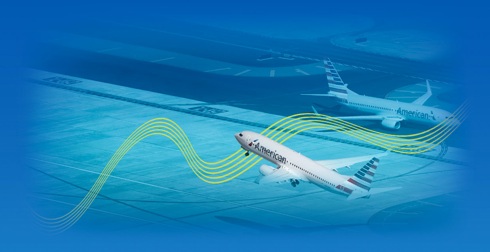
Following a technical fault with the flight data system used by air traffic controllers at Swanwick in the south of England on 12 December the (UK) National Air Traffic Service (NATS) confirmed later in the day that the system had been restored to full operational capability and a thorough investigation was underway to identify the root cause, it is understood.
IMO Secretary General speaks at UNHCR High Commissioner’s Dialogue on protection challenges
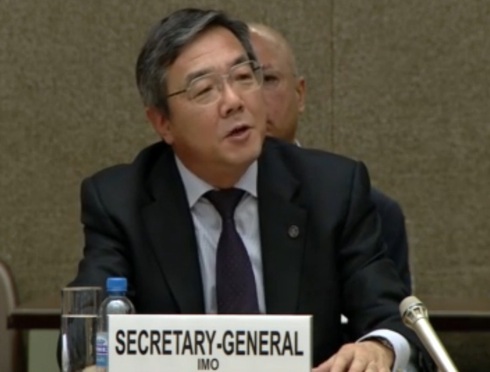
The International Maritime Organization (IMO) has joined with other UN agencies in calling for concerted action from the international community to address the deeply concerning problem of the loss of life, injury, trauma and serious human rights violations affecting migrants, asylum-seekers and refugees travelling by sea, it was reported from IMO in London on 10 December
In a joint statement, IMO, along with the International Organization for Migration (IOM), the United Nations High Commissioner for Refugees (UNHCR), the United Nations Office on Drugs and Crime (UNODC) and the Office of the United Nations High Commissioner for Human Rights (OHCHR), said that closer co-operation between States of origin, transit and destination, and other relevant actors, was critical to reducing loss of life at sea, addressing the drivers of dangerous sea journeys, as well as ensuring that responses by States upon arrival and disembarkation uphold human rights and dignity, and address specific needs for protection of migrants, asylum-seekers and refugees.
Eurocontrol news
Welcome Estonia – EUROCONTROL has reported that on 26 November 2014, the Minister of Economic Affairs and Infrastructure of Estonia, Mrs Urve Palo, signed the documents for the accession of her country to EUROCONTROL.
New studies look to potential social issues of drone use – As part of the strategy to support the development of the European market for civil drones (or Remotely Piloted Aircraft Systems – RPAS) adopted by the European Commission last April in its communication COM(2014)207, DG ENTR (Enterprise in Industry) has commissioned two studies addressing some aspects of the societal issues linked to the development of civil drones applications.
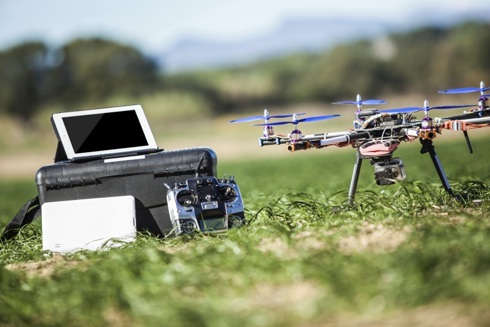 The European Commission has published two studies on social issues linked to the development of civil applications of drones. – Picture by kind permission of EUROCONTROL
The European Commission has published two studies on social issues linked to the development of civil applications of drones. – Picture by kind permission of EUROCONTROL
IMPA on pilotage
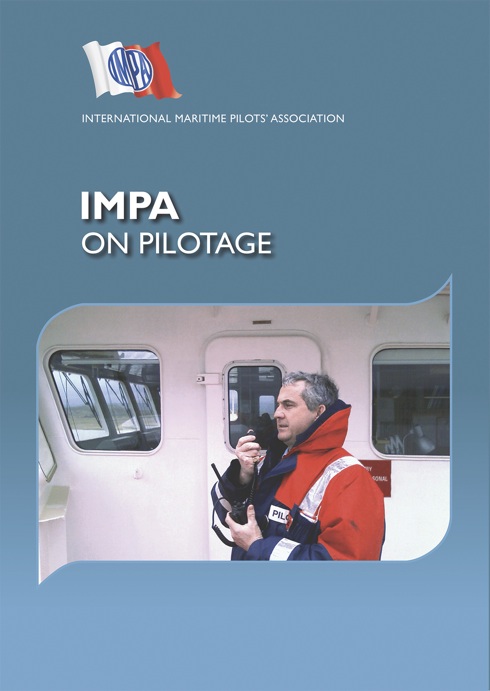 The International Maritime Pilots’ Association (IMPA: www.impahq.org) based in HQS Wellington on London’s Victoria Embankment reports that it has issued in hardback form the above title. Running to 234 pages, (ISBN: 978 1 85609 635 5) this handsome volume has a cover price of £ 75.00. The publisher is Witherby Seamanship International of Edinburgh (witherbyseamanship.com)
The International Maritime Pilots’ Association (IMPA: www.impahq.org) based in HQS Wellington on London’s Victoria Embankment reports that it has issued in hardback form the above title. Running to 234 pages, (ISBN: 978 1 85609 635 5) this handsome volume has a cover price of £ 75.00. The publisher is Witherby Seamanship International of Edinburgh (witherbyseamanship.com)
For long there have been few books on the subject of maritime pilotage and only one example comes to mind with this reviewer, that published by the Nautical Institute on pilotage and ship handling in 1990. There are references in other publications to pilotage such as in the IALA Aids to Navigation Manual.
 The ubiquitous pilot launch in service embodies excellent seaworthy characteristics. Throughout the world pilot organisations are investing in new fleets of pilot vessels and experts such as naval architects will say that pilot craft are a challenge to design and to build for the cutter has to demonstrate very high reliability in performing a safe task under severe operating conditions.
The ubiquitous pilot launch in service embodies excellent seaworthy characteristics. Throughout the world pilot organisations are investing in new fleets of pilot vessels and experts such as naval architects will say that pilot craft are a challenge to design and to build for the cutter has to demonstrate very high reliability in performing a safe task under severe operating conditions.
IMPA on Pilotage is a valuable work outlining the legal and statutory elements of pilotage, how it is conducted and methods of ship handling along with requirements, training and certification of pilots and even an introduction to fatigue management.
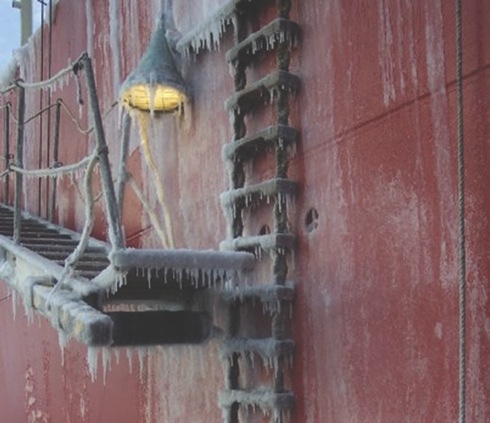 In order to carry out their duties marine pilots must embark onto and disembark from ships at sea by either the traditional method of a pilot ladder or by helicopter. In a section in this book Captain Alex Amos informs that so far there has been no development of a successful alternative method. In their time pilots will recall poor examples of the ladder provided of which the illustration here ably displays.
In order to carry out their duties marine pilots must embark onto and disembark from ships at sea by either the traditional method of a pilot ladder or by helicopter. In a section in this book Captain Alex Amos informs that so far there has been no development of a successful alternative method. In their time pilots will recall poor examples of the ladder provided of which the illustration here ably displays.
Passenger welfare at times of major disruption
UK airports should be better placed to minimise the impact of disruption on passengers thanks to good practice guidance published by the UK Civil Aviation Authority (CAA) early in November.
This guidance sets out key principles and recommended practices to help airports work effectively in partnership with airlines, ground handlers and the many other organisations working within airports so they are better prepared for large disruption and can manage it effectively when it does occur. With the aviation industry now gearing up for the winter season, the guidance is a timely reminder of the practical steps airports can take to make sure they are prepared for bad weather and protect their passengers.
Guidelines can be found here.
New transport scenarios highlight role of cities

On 4 December the International Transport Forum at OECD released projections for modal shares, and emissions at the Lima COP20 conference.
Transport in the urban centres of emerging economies is becoming a major battleground for combatting climate change. Large cities in China, India and Latin America each with over 500,000 inhabitants will more than double their share of world passenger transport emissions by 2050 to 20% (2010: 9%), if current urban transport policies remain unchanged. It is understood that 38% of the total growth in world surface transport passenger emissions to 2050 will come from big cities in these three regions in such a business-as-usual scenario.
Eurocontrol and wind turbines
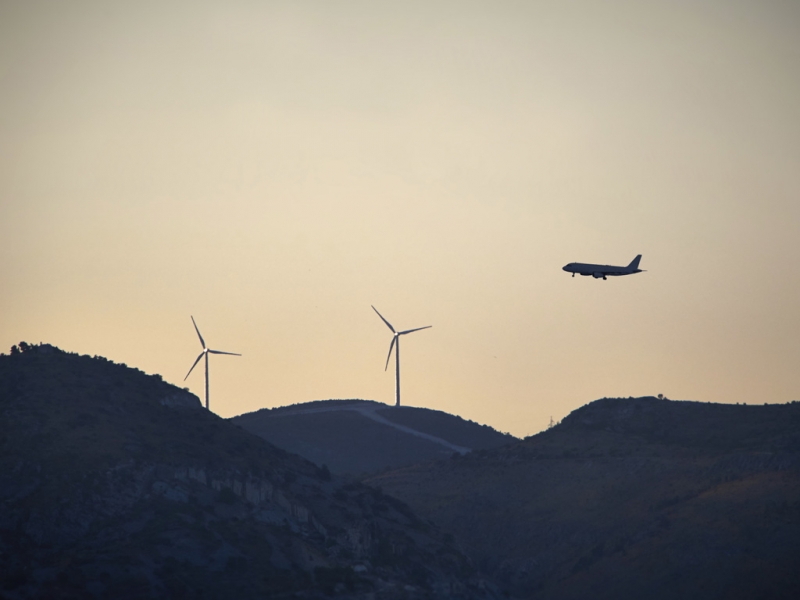 Illustration by kind permission of EUROSTAR ©
Illustration by kind permission of EUROSTAR ©
Many European states have ambitious renewable energy targets for the year 2020. In order to meet these targets, they will have to use renewable, sustainable ways of generating electricity – and wind turbines are useful devices for doing this.
However, wind turbines can potentially have a detrimental impact on the performance of surveillance systems used in air traffic control. A wind farm with many wind turbines could create false targets or lose or corrupt information on an aircraft’s position.
This is still an ongoing concern and EUROCONTROL announced on 20 November that it had recently published an update to its recommended methodology on assessing the potential impact of wind turbine structures on surveillance systems. It also gave suggestions for mitigation options.
How to Assess the Potential Impact of Wind Turbines on Surveillance Sensors
Guidelines reproduced by courtesy of EUROCONTROL.
ICAO’s 2014 Air Services Negotiation conference
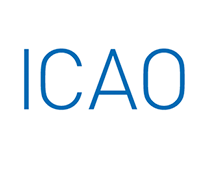 It was announced from Montreal on 25 November that the seventh ICAO Air Services Negotiation Conference (ICAN2014) wound up on a record note in Bali, Indonesia, the previous week, with 78 States/territories and one regional body taking full advantage of ICAN’s unique and cost-effective multinegotiation facility to expand air transport liberalization and market access.
It was announced from Montreal on 25 November that the seventh ICAO Air Services Negotiation Conference (ICAN2014) wound up on a record note in Bali, Indonesia, the previous week, with 78 States/territories and one regional body taking full advantage of ICAN’s unique and cost-effective multinegotiation facility to expand air transport liberalization and market access.
Some 440 negotiators conducted 550 meetings during the five-day ICAN marathon, which led to the signing and initialling of 530 air service agreements and arrangements.
 ICAO at seventy
ICAO at seventy
Possible reductio of S&R resources in the
Mediterranean

Seafarers’ Rights International (SRI) has raised concerns about the implications for masters of the recent reports of the launch of the new EU Frontex operation ‘Triton’ which will apparently have a reduced budget and focus on border control in place of the Italian ‘Mare Nostrum’ that is credited with saving more than 150,000 migrants in the Mediterranean.
Brian Orrell OBE, Chairman of the Advisory Board of SRI commented: “The obligation of masters to assist persons in distress at sea is steeped in maritime tradition and legal history. It is therefore of concern if budgets for search and rescue in the Mediterranean are being reduced. This may increase the number of search and rescue missions that masters have to undertake, as well as their risks of criminal prosecution for any perceived failure to attend to persons endangered at sea.”
IMO adopts mandatory code
for ships operating
in polar waters
The International Maritime Organization (IMO) has adopted the International Code for Ships Operating in Polar Waters (Polar Code), and related amendments to the International Convention for the Safety of Life at Sea (SOLAS) to make it mandatory, marking an historic milestone in the Organization’s work to protect ships and people aboard them, both seafarers and passengers, in the harsh environment of the waters surrounding the two poles.
The Polar Code and SOLAS amendments were adopted during the 94th session of IMO’s Maritime Safety Committee (MSC), which was meeting at the Organization’s London headquarters from 17 to 21 November 2014.
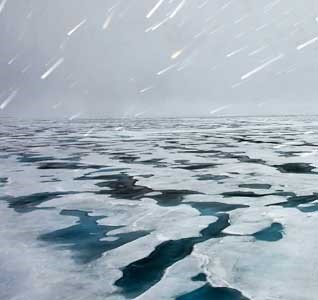 The Polar Code covers the full range of design, construction, equipment, operational, training, search and rescue and environmental protection matters relevant to ships operating in polar waters – © Mark Garten / UN Photo
The Polar Code covers the full range of design, construction, equipment, operational, training, search and rescue and environmental protection matters relevant to ships operating in polar waters – © Mark Garten / UN Photo
China’s most advanced deep-water semi-submersible drilling rig in DNV GL class
It was announced from Shanghai on 21 November that COSLProspector, the fourth deep-water semi-submersible drilling rig built by CIMC Raffles for China Oilfield Services Limited (COSL), had been delivered in Yantai, Shandong Province. It represents another milestone for China’s deep-water drilling rig going into the global mainstream market.
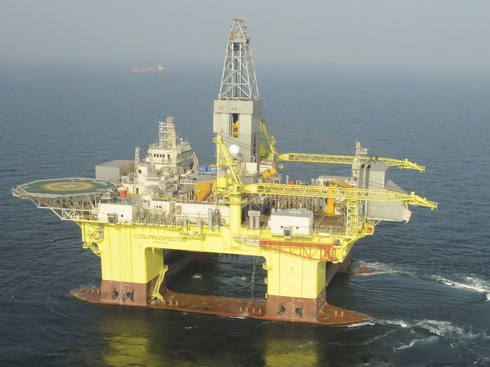 COSLProspector fulfils ice-class, environment-friendly and low-temperature
COSLProspector fulfils ice-class, environment-friendly and low-temperature
requirements
International e-Navigation Underway 2015
Readers may wish to be aware of this event to be held in MV Pearl Seaways steaming Copenhagen-Oslo-Copenhagen, 27-29 January, 2015
Registration is now open and further details can be found at www.e-navigation.net
 The programma of this three day event can be found here.
The programma of this three day event can be found here.
ENC 2015 call for abstracts
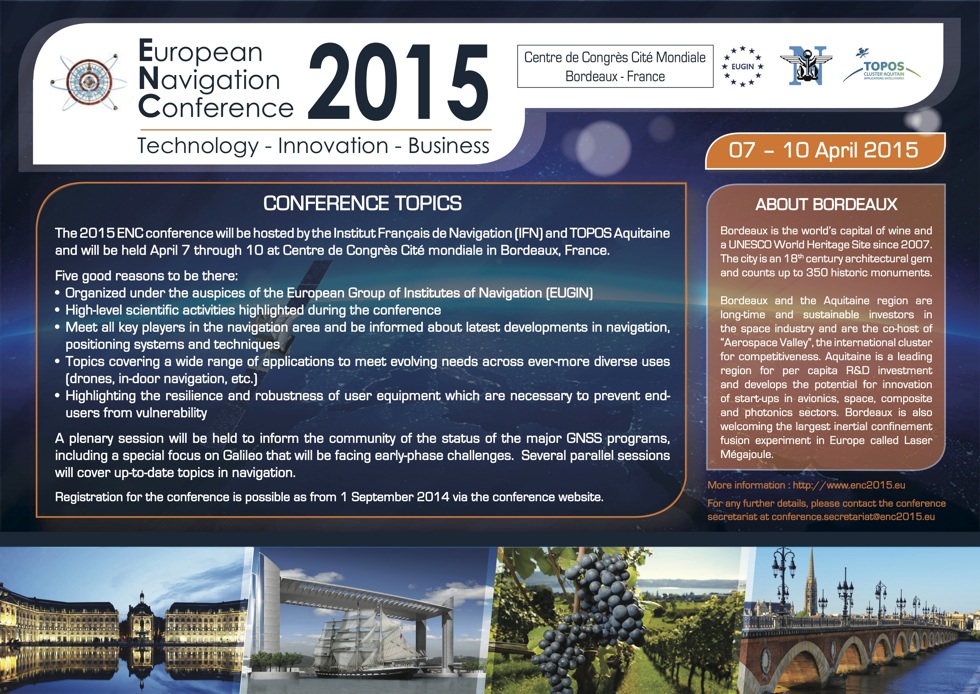
The European Navigation Conference is an annual event organized under the auspices of the European Group of Institutes of Navigation (EUGIN). Gathering 150 members of the scientific community and more than 300 guests overall, the ENC is a unique opportunity to meet all the key players in the navigation area. It is renowned for its high-level scientific activities highlighted during the conference and the wide range of topics covered.
Call for abstracts submission by December 31st, 2014.
ATSB – Aviation safety trends
The first report by the Australian Transport Safety Bureau (ATSB) of safety trends in Australian aviation reveals that while the nation’s skies remain safe, there are some shifting trends to watch.
Of note in this reporting period was an increase in the rate of airborne collision alert system warnings in high-capacity air transport operations over the past five quarters (since April-June 2013).
Loss of separation incidents involving low capacity air transport also increase in January to June.
Tideland introduces new offshore helideck platform lighting
In mid-November Tideland Signal Corporation, (Tideland) launched its new PTPS (primary touchdown positioning system) that is designed to provide greater visibility to pilots landing on offshore helideck platforms at night or in reduced visibility by illuminating the landing circle and the “H” (the C&H).
PTPS is designed and engineered to fully comply with the UK CAA CAP 437 standards for offshore helicopter landing areas and also is suitable for Zone 1, Zone 2 hazardous areas.
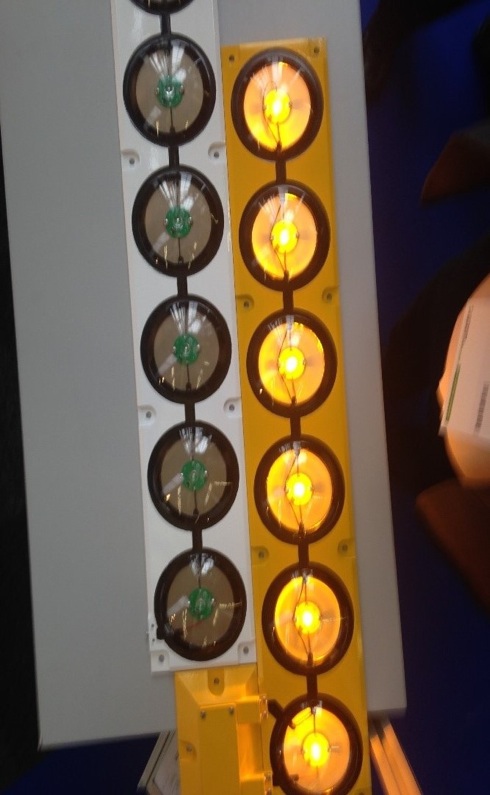 C & H lights in action at Offshore Energy Amsterdam, 2014
C & H lights in action at Offshore Energy Amsterdam, 2014
NTSB update on crash of
Virgin Galactic SpaceShipTwo
 On 12 November the (US) National Transportation Safety Board (NTSB) issued an investigative update into the crash of SpaceShipTwo on 31 October in Mojave, California.
On 12 November the (US) National Transportation Safety Board (NTSB) issued an investigative update into the crash of SpaceShipTwo on 31 October in Mojave, California.
The investigation is ongoing and any future updates will be issued as events warrant.
UK eLoran now in operation
to backup vulnerable GPS
 Diagram illustrating shipping traffic in NW European waters. The busiest areas are coloured red. The digits indicate the number of movements recorded in 2012.
Diagram illustrating shipping traffic in NW European waters. The busiest areas are coloured red. The digits indicate the number of movements recorded in 2012.
- Seven land-based monitoring stations to help ships navigate with signals one million times more powerful than GPS;
- eLoran technology will protect world’s busiest sea lanes from powerful illegal GPS jammers, space weather interference and other causes of GPS loss;
- Technology could backup critical national infrastructure, such as the Grid and City of London in the case of major GPS outage.
Technology to counter the threat of GPS jamming is now available at Dover and along the East coast of the UK, as the nation continues to set a benchmark across the globe.
The General Lighthouse Authorities (GLAs) of the UK and Ireland announced at the end of October the Initial Operational Capability of UK maritime eLoran.
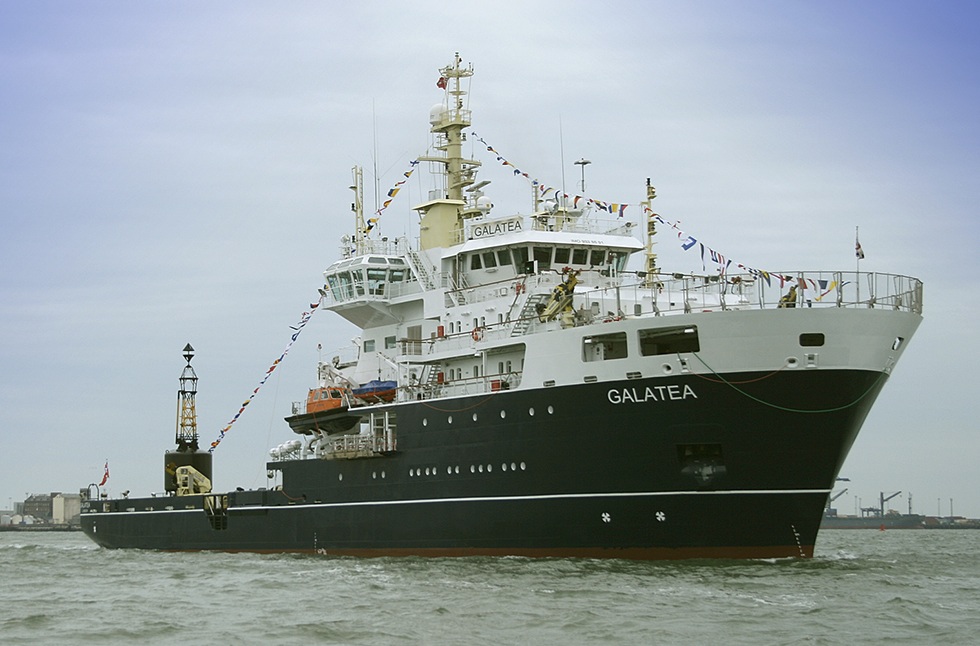 The Trinity House vessel Galatea used on the eLoran trials and equipped for eLoran evaluation.
The Trinity House vessel Galatea used on the eLoran trials and equipped for eLoran evaluation.
